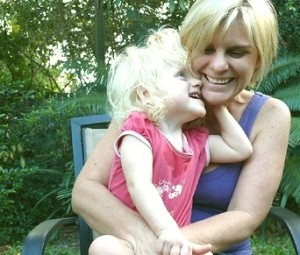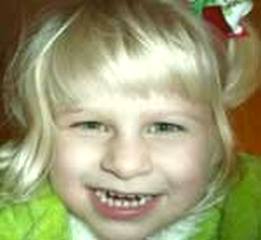Angelman syndrome is categorized as a genetic (hereditary) disorder which leads to disability of development as well as neurological problems. Such neurological issues may include difficulty while speaking, difficulty while walking or balancing. There are also possibilities of seizures. Sudden laughter and haunt smiling laughter are amongst the common characteristics of this physical issue. Many people affected with this condition have cheerful personality.
At birth the symptoms of Angelman syndrome may be nondescript and unnoticeable. The condition is often determined when parents understand that there is a delay in development of the child, this usually happens when the baby is around six months to one year old. A child affected with this syndrome may also suffer from seizures when he/ she are two to three years old.
Angelman Syndrome Pictures
Check out the pictures of Angelman Syndrome affected child and adult to see how the disease can affect people.
Symptoms of Angelman syndrome
There are some sings and symptoms of Angelman syndrome which makes it a little easier for you to determine the prevalence of the syndrome in a person. These symptoms may include:
• Delayed development for example inability to crawl or even babble at the age of six months to a year
• Mental retardation
• Inappropriate speech
• Inability to balance or walk properly (this condition is also known as ataxia)
• Shivering of arms and legs
• Haunt laughter and smiling
• Excitable and cheerful personality
Some other possible symptoms of Angelman syndrome may also include:
• Seizures attacks which onsets from the second or third year of infant’s life
• Thrusting of tongue
• Jerky or arrhythmic and stiff movement of the body
• Squinting of eyes
• Small sized head as well as flat head at the back
• Hands raised- up over the head while walking
• Lower jaw may be deformed or may protrude out
• Hypopigmentation or pigmentation of hair, eyes etc
When it becomes necessary to see your doctor?
As mentioned above most children do not have any signs or symptoms of Angelman disorder when they are born. The very first indication of this syndrome is delay in development of the baby when he or she is six to twelve months old. In case you notice any of the aforementioned symptoms of the syndrome it becomes necessary to see the doctor to help your child manage with the condition.
Causes of Angelman syndrome
Angelman syndrome is a hereditary disorder. It is usually caused due to problem related with gene on the Chromosome 15 which is known as ubiquitin- protein ligase or also as UBE3A gene. Genes are part of DNA that gives the blueprint indication all your characteristics. Genes are in pair and are inherited from both mother and father. The copy of gene that is inherited from your mother is known as maternal copy whereas the gene copy obtained from your father is known as paternal copy.
Missing or defective gene is the cause of this Angelman syndrome. In normal cases both gene copies, which are in pair, are active. This indicated that the information inherited from maternal copy as well as paternal copy is utilized by your cells. But in some genes it is also noticed that only of the two copies in the pair is active. The function of every pair of gene is according to the source whether maternal or paternal. This gene function specific to the parent is known as imprinting. When any gene copy which is usually active is either missing or defective it leads to issues related to functions as well as characteristics associated with that particular gene.
In the brain usually a maternal copy of the gene UBE3A is active. Most cases of Angelman syndrome is attributed to missing or damaged condition of portion of maternal chromosome 15. However, in some cases this condition is caused due to inheritance of two copies of the gene from paternal side, instead of one copy of gene from the mother and one from the father. This additional gene inheritance from father’s side is known as uniparental disomy.
Tests and Diagnosis for Angelman syndrome
It is already known that developmental delay is amongst the first and foremost symptoms of the syndrome; hence if you notice any of the stated symptoms it is better to consult a doctor and get the issue diagnosed. Possibly doctor may determine the condition just by looking at walking ability of the child or inability to balance. He may also be able to determine the condition by looking at flatness at the back of the head or comparatively smaller size of the head. In case your doctor suggests diagnosis for confirmation, then your child’s blood sample will be obtained to perform genetic studies. A combination of such genetic examination is done to find the defect in the gene; these tests may include:
• Karyotyping or Chromosome analysis
• Fluorescent In Situ Hybridization abbreviated as FISH
• DNA Methylation tests
• Sequencing of UBE3A gene or Ubiquitin protein ligase E3A
Treatment for Angelman Syndrome:
Treatment for Angelman Syndrome is targeted on improving development ability of the child as well as improving medical issues. This is because there is no way to reverse the defects to chromosome which means there is not cure for this physical problem.
A team of certified health care profession may work together to help your child cope with the conditions. Depending upon your child’s difficulties, symptoms etc a treatment will be decided by your health care professional. Some of the treatment regimens may include:
• Anti- seizure drug: These kinds of medications are essential in order to control seizures attack which is experienced by a child under Angelman syndrome.
• Physical therapy: There are certain physical therapies that may help children with this condition to overcome physical movements as well balancing and walking ability.
• Communication therapy: Tough child with Angelman syndrome do not completely develop their speaking, but some simple sentences; hence for that communication therapy may help. For example non verbal language ability such as sing language as well as communication through picture.
These are some treatment training that an affected child may have to undergo to cope effectively with Angelman syndrome.




That is a really good tip especially to those fresh to the blogosphere. Simple but very accurate informationÖ Many thanks for sharing this one. A must read article!